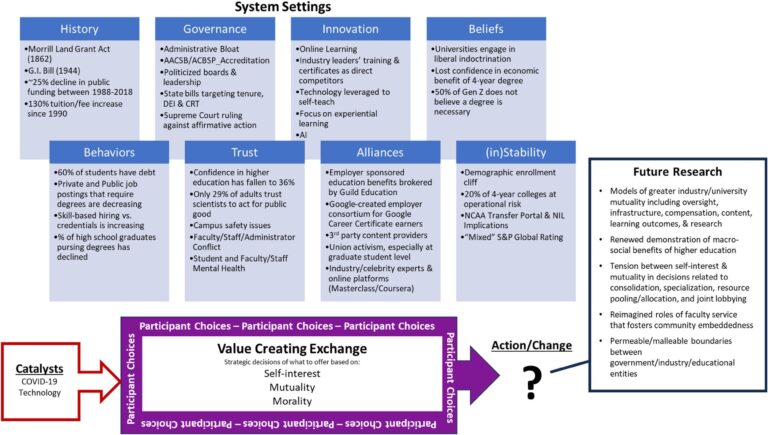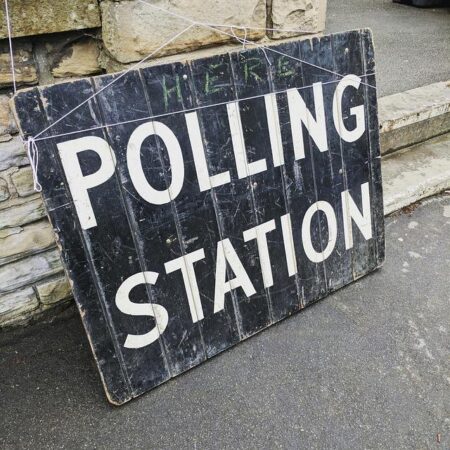A growing number of Americans are expressing concern over the direction of the U.S. higher education system, according to a recent survey by the Pew Research Center. The findings reveal a significant shift in public opinion, with more citizens now viewing colleges and universities as moving away from their traditional role. This rising skepticism comes amid ongoing debates about rising tuition costs, campus climate, and the value of a college degree in today’s economy. As policymakers and educators grapple with these challenges, the Pew report provides a critical snapshot of how Americans perceive the state of higher education in the nation.
Growing Concern Over Quality and Accessibility in Higher Education
Recent surveys reveal a significant shift in public opinion, with many Americans expressing deep skepticism about the future trajectory of higher education in the United States. Concerns have intensified over the quality of academic programs and whether institutions are adequately preparing students for the evolving demands of the workforce. Critics argue that rising tuition fees and inconsistent educational outcomes are exacerbating inequality, making it more difficult for many to justify the long-term value of a college degree.
Accessibility remains a major hurdle, as many prospective students face financial and systemic barriers that limit their opportunities. Key factors driving unease include:
- Escalating student debt burdens that deter enrollment
- Unequal access to resources across geographic and socio-economic groups
- Gaps in support services for underrepresented populations
| Concern | Percentage of Respondents |
|---|---|
| Quality of instruction | 68% |
| Affordability | 72% |
| Access for low-income students | 75% |
Rising Costs and Their Impact on Student Enrollment and Debt
The escalating expenses associated with higher education continue to weigh heavily on prospective and current students alike. As tuition and fees surge, universities are witnessing a notable decline in enrollment, particularly among low- and middle-income demographics. This trend not only threatens the diversity of student populations but also raises alarms about the broader accessibility of college education in the United States. Families face difficult financial trade-offs, with many reconsidering the pursuit of a degree amid growing concerns over affordability and return on investment.
Key effects of rising education costs include:
- Decreased enrollment in four-year degree programs
- Increased reliance on student loans and resulting debt burdens
- Heightened financial stress impacting academic performance and retention
| Year | Average Tuition & Fees | Median Student Debt | Undergraduate Enrollment |
|---|---|---|---|
| 2015 | $9,400 | $27,000 | 20 million |
| 2020 | $10,900 | $31,500 | 18 million |
| 2023 | $12,300 | $35,200 | 17 million |
The Role of Political Polarization in Shaping Opinions on College Education
Political polarization has increasingly influenced how Americans perceive the trajectory of higher education in the U.S. With partisan divides deepening, opinions on college campuses often split along ideological lines, reflecting broader cultural and political battles. For many conservatives, concerns about ideological conformity and rising tuition costs dominate their critiques, framing the system as disconnected from traditional values and economic realities. Conversely, liberals frequently focus on access and equity issues, advocating for reforms that address systemic inequalities but also expressing frustration over perceived resistance to progressive change.
This widening chasm shapes public discourse and complicates consensus on education policy. The table below highlights key issues prioritized by each political group, illustrating how differing worldviews drive contrasting conclusions about higher education’s direction:
| Issue | Conservative Perspective | Liberal Perspective |
|---|---|---|
| Tuition & Costs | Excessive and burdensome | Need for affordability and more scholarships |
| Curriculum Content | Too politically biased, lacking diversity of thought | Needs greater focus on inclusivity and social justice |
| Campus Free Speech | Often suppressed in favor of progressive ideas | Essential but must not enable hate speech |
| Role of Education | Primarily job preparation and economic mobility | Broader mission including civic engagement and critical thinking |
Proposed Reforms to Restore Confidence in the Higher Education System
To rebuild trust among Americans, experts emphasize the need for targeted policies that address both affordability and outcome transparency. Increasing federal and state funding for public institutions could alleviate the financial burden on students, making higher education more accessible. Additionally, implementing standardized metrics for post-graduation employment and earnings would allow prospective students to make better-informed decisions, restoring confidence in institutional value.
Several proposals have gained traction, including:
- Strengthened accountability measures: Linking funding to graduation rates and job placement.
- Expanded support services: Offering mentorship and career counseling tailored to diverse student populations.
- Curriculum reform: Updating programs to better align with evolving labor market demands.
| Reform Area | Expected Impact | Stakeholders Involved |
|---|---|---|
| Financial Aid Expansion | Reduced student debt | Federal Government, Colleges |
| Outcome Transparency | Informed enrollment choices | Institutions, Accrediting Bodies |
| Curriculum Modernization | Enhanced employability | Educators, Employers |
To Wrap It Up
As concerns about the direction of the U.S. higher education system continue to rise, policymakers and educators face mounting pressure to address the challenges identified by a growing share of Americans. The findings from the Pew Research Center highlight a critical moment for institutions and lawmakers alike to reassess priorities and work toward reforms that resonate with the public’s expectations. How these stakeholders respond in the coming years will play a pivotal role in shaping the future landscape of American higher education.




